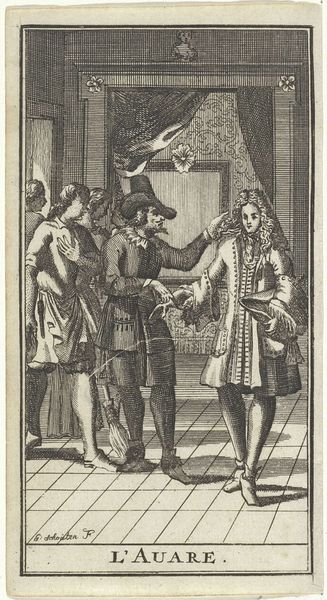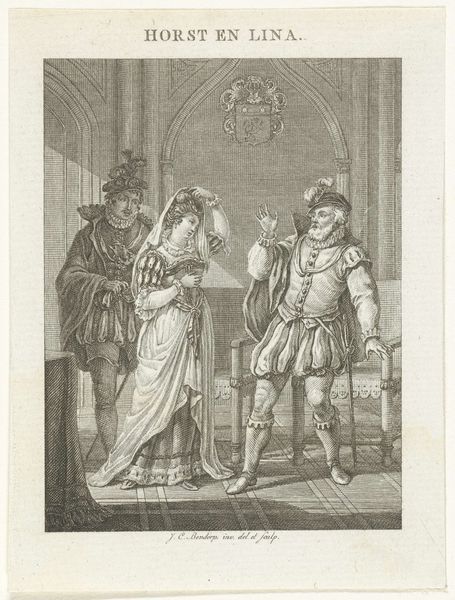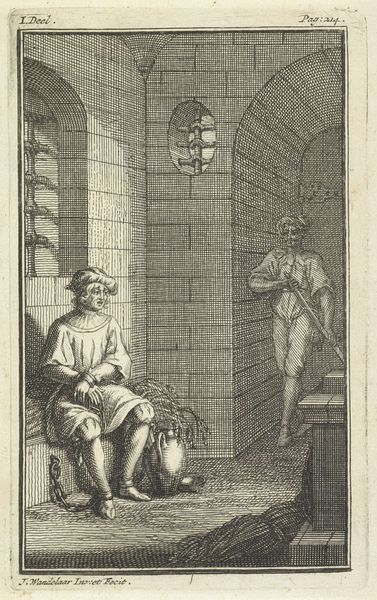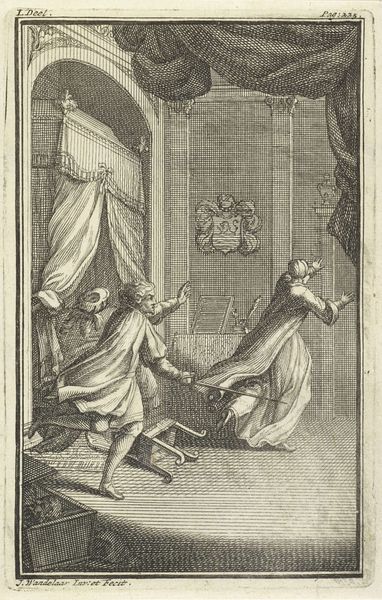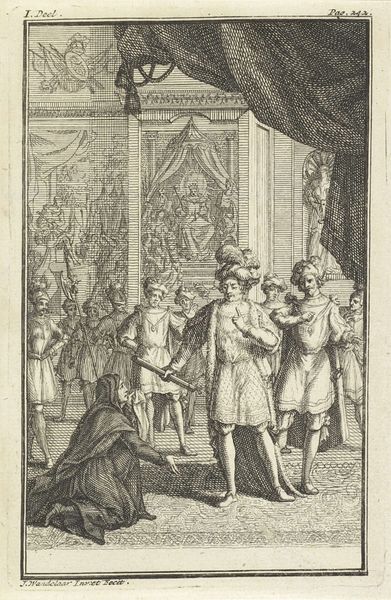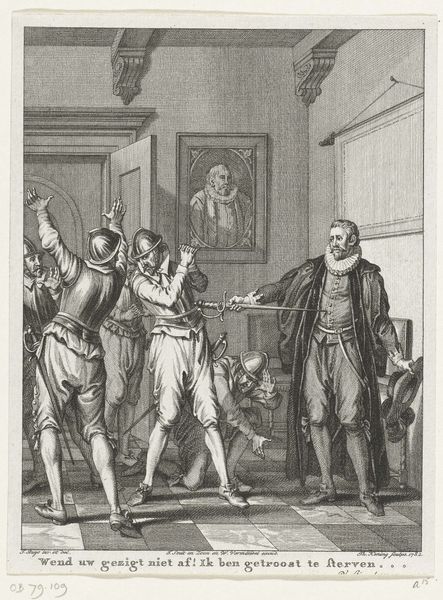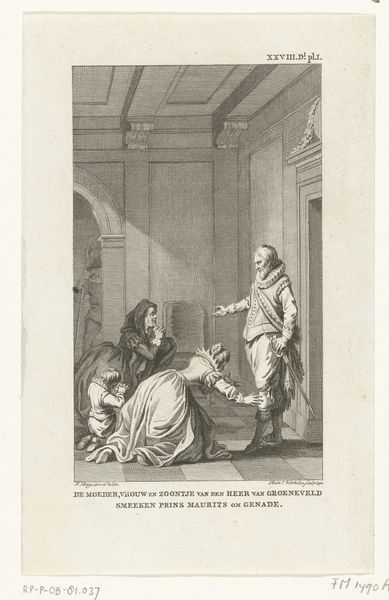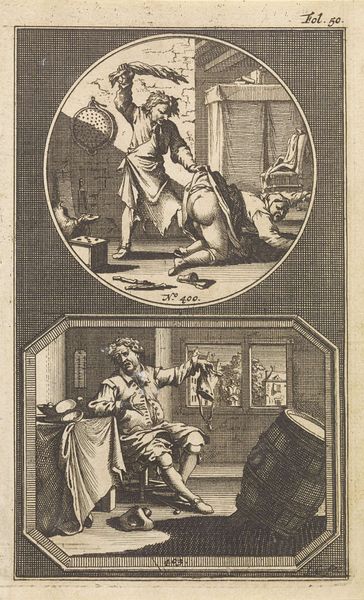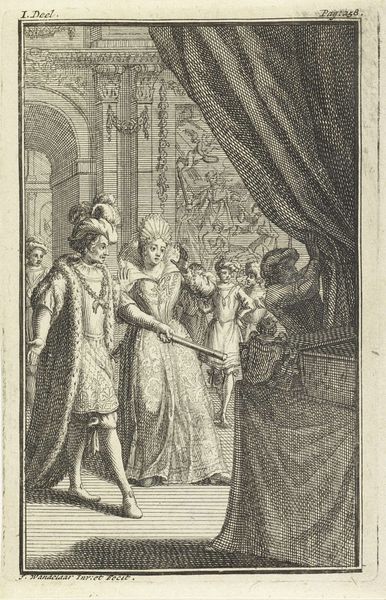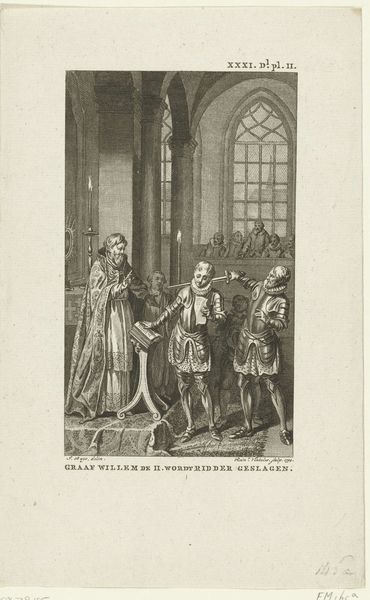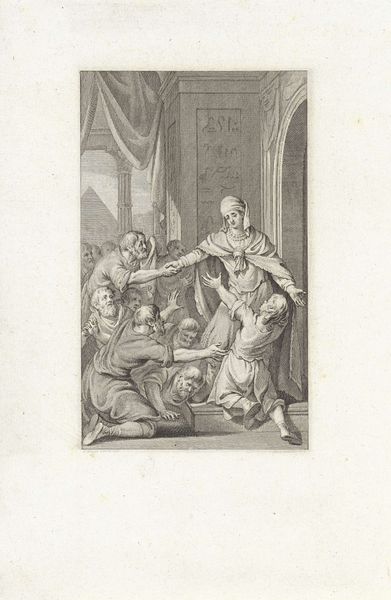
print, pen, engraving
#
narrative-art
#
baroque
# print
#
pen illustration
#
old engraving style
#
figuration
#
pen-ink sketch
#
pen work
#
pen
#
genre-painting
#
history-painting
#
engraving
Dimensions: height 136 mm, width 89 mm
Copyright: Rijks Museum: Open Domain
Editor: Here we have Jan Wandelaar’s engraving, "Vrouw knielt voor een voorname heer," from 1722-1723. The scene feels very theatrical and staged, with the woman kneeling before the nobleman. What strikes me most is the stark power dynamic visualized here. How do you interpret this work? Curator: This piece immediately brings to mind the rigid social structures of the 18th century, doesn't it? It is tempting to see a critique of patriarchy and class privilege embedded within the seemingly simple narrative. Note the architecture. It dwarfs both figures but the man controls the scene. Where do you think the female figure’s vulnerability is rooted? Editor: Well, she’s literally on her knees! That posture, combined with the nobleman’s stance and gesture, really emphasizes her subjugation. Curator: Precisely. And think about the historical context: this was an era defined by strict social hierarchies and limited opportunities for women. How does the artist visually reinforce those constraints? The surrounding interior acts as a symbolic cage for this drama of subservience, as if performed under surveillance. Does the coldness in tonality offer any clues? Editor: I see your point. The whole scene, rendered in this stark engraved line, lacks warmth and emphasizes the formality of the interaction and power imbalance. It seems very calculated and cold. Curator: It is as though Wandelaar is laying bare the mechanics of oppression. Now, considering this work in relation to feminist theory, how might we interpret the woman’s agency, or lack thereof? Does the image challenge or reinforce societal expectations of women during the Baroque period? Editor: I initially saw just a simple depiction of deference. But framing it through social hierarchy reveals a visual argument about the restricted roles imposed on women, so even the act of kneeling becomes a statement. Curator: Exactly! By analyzing art through lenses like gender and social class, we gain deeper insights into the past. It invites a contemporary discourse that reveals these power structures in visual form. Editor: Thanks, I see it now! Thinking about these power dynamics really opens up the print.
Comments
No comments
Be the first to comment and join the conversation on the ultimate creative platform.

